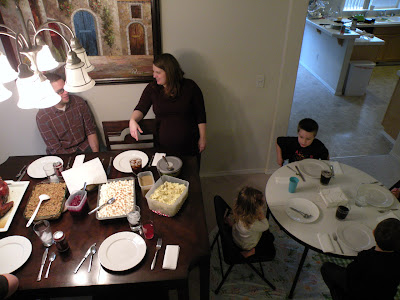Think about when a woman has a biological child.
Before the child has even been born,
the attachment process has begun.
Mother and child feel connected and love.
Once the child is born,
the mom cares for the baby by
holding, gazing, playing with, and singing to the baby
and so bonds are strengthened.
As the mom meets the baby's needs by
feeding, keeping warm, changing diapers, and comforting
the baby learns to trust her.
As humans, we are relational beings.
Relationships are at the center of our lives.
Research shows
our relationships and attachment experiences
even shape our brain development.
The attachment cycle
as noted by Dr. Vera Fahlberg
begins with needs (for example, baby hungry)
which leads to arousal (baby cries)
which leads to the need met (caregiver feeds baby)
which leads to relaxation (ahh, tranquility).
And then you start again.
And if the cycle works this way
attachment and trust happen
and the baby develops normally.
This stage is especially critical
during the first year or two of life.
If the cycle is continuously interrupted,
it leads to
disorganized attachment.
Now our experience
in adopting two young children.
We were facing disorganized attachment
which showed itself in different ways for each child.
There was avoidance, shutting down,
not sure how to act or who to go to around people,
acting out, anger, clingyness, etc.
The other tricky part of this whole thing
is that while the child needs to attach to the parents,
the parents also need to attach to the child.
Attachment is probably at the center of most of the
challenges of adoption.
Yes, when we first met the boys we felt something for them
and we knew they were to be in our family,
but real attachment takes time and effort.
We spent time together and frequently reassured them
that they could come to us when they needed something,
that we were forever parents,
and that they could trust us because
we knew what we were doing.
(yeah, maybe we didn't know everything,
but it was important that they heard and understood
that we knew how to take care of them)
Attachment came differently for each child
and at different rates.
Some walls were built up so strongly
it was hard to break through.
I actually just think it was very, very recently
(almost 4 years later)
that we've noticed and felt the biggest difference.
It took time and consistency,
but there were some things,
especially at the beginning,
that we tried and they helped.
The power of touch
can not be overlooked
throughout the attachment process.
We would hug, carry, and hold.
We rubbed backs and put lotion on arms and feet.
The most interesting thing though
was "playing baby" with them.
It actually started naturally with the boys initiating the play
and then became something regular we did.
First, they were the babies
and I would take turns
holding them and feeding them
out of a water bottle.
I tried to keep eye contact with them as I held them.
Soon the play evolved
and they were babies crawling on the ground around me
coming to me when they needed to be "fed" from their bottle.
Later on, they "learned to walk" and "said their first words".
When we played,
I followed their lead
and I found it fascinating
that their play naturally followed the stages of development.
Eventually, when they were ready,
they didn't need to play baby anymore.
Attachment really is at the center
of all the pieces of adoption.
(I could say much more, but no time this morning . . .)
We have been far, far from perfect along the way
and so we've learned an incredible amount.














































